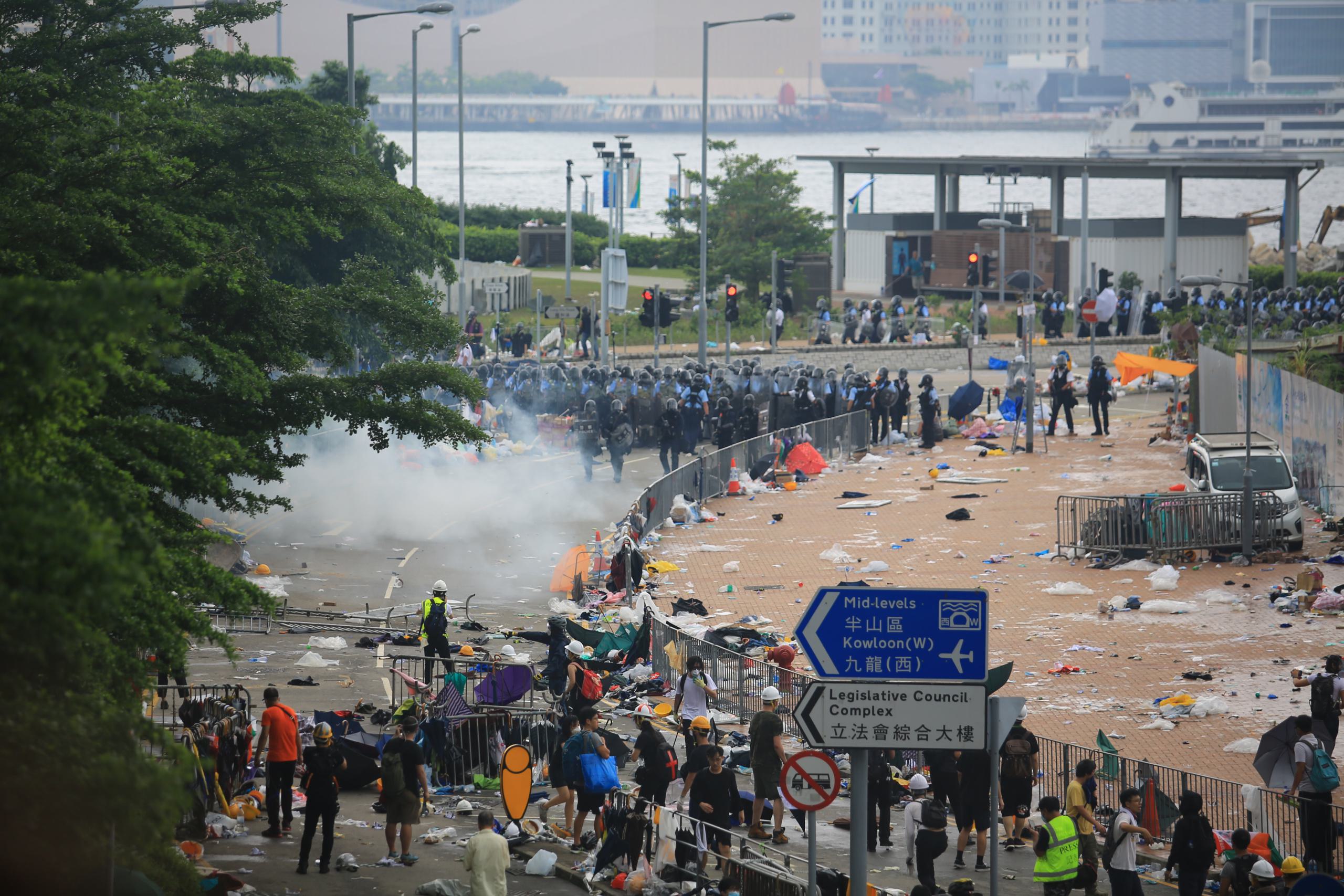Latest advice for how to respond to tear gas

Regular and well-attended protests have been ongoing in Hong Kong since March. What initially began as opposition to a controversial proposed extradition bill has taken on a wider anti-China and pro-democracy message; and demonstrators are showing no signs of letting up in the coming weeks.
Clashes between protestors and the security forces have become common at such protests, with rubber bullets, batons, pepper spray and tear gas being used by the police in an attempt to disperse crowds. Although foreign nationals and business travellers are not being directly targeted, there is an incidental risk to those caught up in the vicinity of ongoing protests. Tear gas poses a particular risk to unsuspecting travellers as it can impact a wide area and can be hard to detect.
What is tear gas?
Tear gas, sometimes referred to as CS gas, is a non-lethal chemical weapon often used by security forces for crowd control during protests or riots. Despite the name, tear ‘gas’ is actually a solid. It is usually dispersed via aerosol canisters, hence the ‘gas like’ appearance. Typically, security forces utilise tear gas launchers to fire tear gas shells, although tear gas grenades can also be thrown by hand.
What are the symptoms of tear gas?
The primary function of tear gas is to cause short-term but severe irritation to eyes, nose, mouth and lungs in order to force targets to withdraw from an area. Symptoms include:
- Stinging/burning sensation in eyes, nose, mouth, throat and skin
- Excessive coughing, breathing issues, sense of feeling choked
- Blurred/reduced vision and tearing of the eyes
- Vomiting/nausea
The severity of symptoms is directly linked to proximity to the source of the tear gas, as well as length of exposure. Those with pre-existing medical conditions such as asthma may experience more severe symptoms; children are also more vulnerable. There is also an outlying chance of being directly hit by a tear gas shell. Security forces are not supposed to fire directly at individuals, but in reality this often happens and being struck directly by a shell can cause significant injuries.
Tear gas is designed to have a short-term impact on individuals, with the worst of the symptoms generally subsiding after around 30 minutes. Residual symptoms can last for hours.
Responding to tear gas
While gas masks and chemical safety goggles may provide the best defence against tear gas, the average traveller is unlikely to have such items at their disposal. The following advice is aimed at travellers who may inadvertently find themselves caught up in an area where tear gas is being used, as opposed to individuals such as journalists who are planning to spend extended periods of time in at-risk areas.
- Avoid the area. The most effective way to mitigate the symptoms of tear gas is to avoid areas where tear gas may be deployed. Generally, this is on the ‘front line’ of protests, where demonstrators come face-to-face with security forces. If the security forces are preparing to fire tear gas, they are likely to put on gas masks and deploy riot shields. This is often done with little-to-no notice.
- Leave the area. If tear gas has been fired, leave the area immediately. The tear gas ‘cloud’ will begin to spread very quickly, you should avoid becoming caught up in it. Try to get to an area where there is fresh air, ideally upwind and on higher ground.
- Do not attempt to pick-up or kick tear gas canisters.
- Hold your breath. Holding your breath while you vacate the area will help to prevent the worst of the symptoms. Alternatively, breathing into your shirt/jacket is preferable to breathing normally. Covering your mouth with a damp scarf/bandana (or similar) or a builders dust mask, can also be an effective way of reducing the symptoms.
- Shut your eyes. This may not be possible depending on your location, but you are likely to lose visibility fairly quickly if you do not shut your eyes anyway. Using tight-fitting swim goggles can go some way to reducing the symptoms. Those wearing contact lenses should remove them as soon as possible; tear gas particles will stick to them and can cause long-term damage. Similarly, remove glasses as particles will stick to them and you may continue to breathe them in.
- Try to remain calm. Calling for help or crying out is likely to result in further tear gas particles being inhaled. Try to remain focused on holding your breath and leaving the area as quickly as possible.
- After having vacated the area, rinse your eyes and face with cold water. Water may cause some initial aggravation but will help to wash away tear gas particles. Soap can also be used if available.
- Change your clothes as soon as possible. Tear gas particles will remain on your clothes, so it is important to change them. Do not place the clothes on your bed. Either bin them, or air them out and wash them twice before wearing them again.
- Shower thoroughly. Keep your eyes closed as tear gas particles may wash down from your hair. Use plenty of soap.
- Seek medical attention if needed. Most symptoms should have worn off within about 30 minutes, but if they persist, seek medical attention. This is particularly applicable for those with pre-existing medical conditions.
- Be aware that tear gas ‘clouds’ can travel. Even those not in the immediate vicinity of a protest may experience mild symptoms as tear gas particles travel in the wind. If staying in accommodation near to protest locations, consider keeping windows closed to minimise the chance of exposure.




